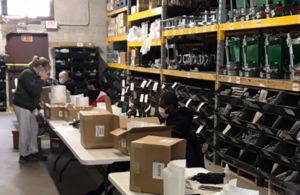 In light of the COVID-19 crisis, the NLRB has recently started ordering many upcoming union elections to be conducted by mail ballot. Some companies and unions are also entering into stipulated election agreements that provide for mail ballot elections.
In light of the COVID-19 crisis, the NLRB has recently started ordering many upcoming union elections to be conducted by mail ballot. Some companies and unions are also entering into stipulated election agreements that provide for mail ballot elections.
Mail ballot elections are similar to in-person, manual elections in many ways. Just like manual elections, mail ballot elections are conducted by secret ballot. And like in a manual election, to win a mail ballot election, a union needs a majority of the votes cast, not a majority of the workers in the unit.
Once the union files a petition for a mail-ballot election, the “critical period” begins. As in a manual election, once the petition is filed, if the company or the union makes any threats or promises, the election results could be overturned.
Many NLRB offices are holding pre-election hearings by telephone or videoconference. If the only issue is whether to hold the election in person or by mail ballot, the hearing will likely be held by telephone and should be short and simple. If there are other unresolved issues (including issues about the unit), there will likely be a video conference hearing.
Most NLRB offices are trying to schedule mail ballot elections quickly. The NLRB will generally mail the ballots soon after a notice of election issues. If you would like election materials to be provided in a language other than English, you should notify the NLRB agent.
The NLRB will notify the company and the union 24 hours before it mails the ballots. Once the NLRB sends that notification, the company is no longer allowed to hold any captive audience meetings.
Local unions are allowed to continue communicating with workers, making house visits, and campaigning after the NLRB mails the ballots.
Local unions are not allowed to collect mail ballots from workers or do anything else that will interfere with the secrecy of the election.
There are a few key things to remind workers about if you are having a mail ballot election:
- Workers should read the instructions that come with their ballot kits carefully.
- Workers should mark their ballots according to the instructions they receive and then put their ballots inside the blue envelopes provided in the kit.
- Workers should put the blue envelopes inside the larger yellow envelopes provided in the kit. Workers must sign the outside of the yellow envelope that they mail to the NLRB. The yellow envelope has prepaid postage, so workers do not need to add any stamps.
- Workers should mail their ballots as soon as they can to make sure the ballots arrive on time.
-
- As long as the NLRB receives a ballot before the ballot count is held, it will generally be treated as on time.
- But, it is safest to make sure the ballot will arrive by the due date, which is usually two to three weeks after the ballots are mailed.
-
- If a worker has not received a ballot within a few days after the NLRB mails the ballots, that worker can contact the NLRB and request a duplicate ballot kit. A worker may also contact the NLRB to request a duplicate kit if the worker’s address has recently changed.
After workers mail in their ballots, the NLRB will hold a ballot count. Most NLRB offices are conducting the ballot count by video conference. Local unions may choose union officials or workers as observers. Observers may challenge ballots during the count.
If you are dealing with a mail ballot election and have any questions about the process or requirements, please contact Amanda Jaret in the Legal Department at ajaret@ufcw.org.

